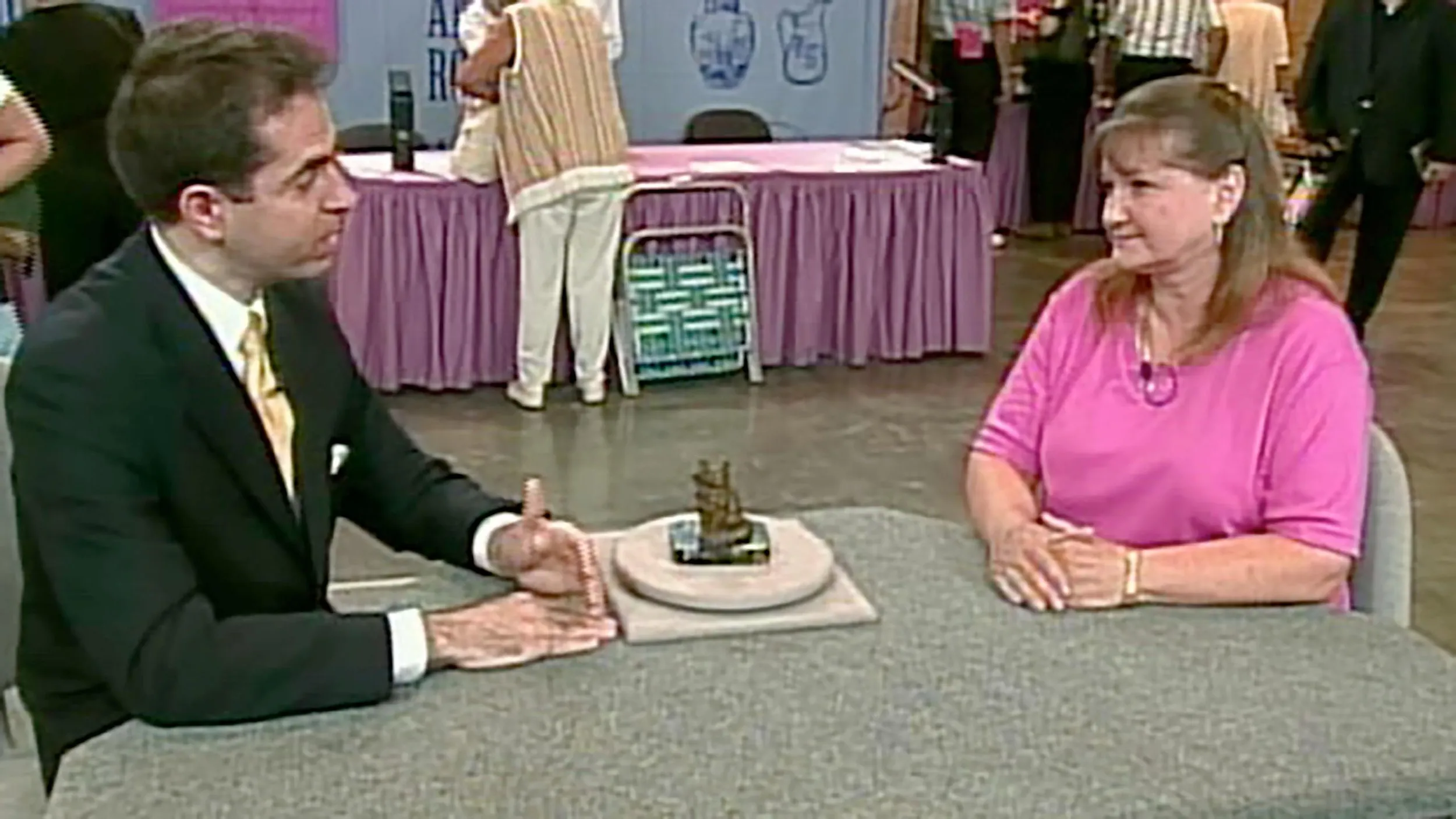GUEST: We've had the doll in the family for about 50 years. It was my mother's doll.
APPRAISER: Uh-huh.
GUEST: And she was born in 1909, but I don't know where she got it or...
APPRAISER: All right, well, I'll give you a little rundown. It's a German doll, and it was produced anywhere from the late 1890s to the early 1900s. It's made by a company called Handwerck, and if you look on the back of the doll's head, you'll see there is the name, "Handwerck, D.E.P., 109 and 15." The 109 stands for the mold number of the doll's face. Handwerck is the maker. Okay, she's unusual because she's a black doll. The Germans and the French had a great fascination with American art and culture in the late 19th century, so they produced these dolls for export. You asked me a question about the two little strings on the back of the head.
GUEST: Right, uh-huh.
APPRAISER: Those were to tie her eyes in when she was shipped from Germany to America.
GUEST: Oh, really? She's got glass eyes, which are brown.
GUEST: Uh-huh.
APPRAISER: Pierced ears, which if you look closely... Her hair is black mohair, which is male goat's hair. She was made in an area of Germany called Waltershausen, which was very famous for very fine-quality dolls and toys. Most black dolls from this era are a lot smaller. She's very unusual because of her size, she's almost 32 inches. She's got a really good-quality joined composition body, which is wood and papier-mâché. These were her original clothes, which are sort of a little bit tattered, but it's better to be tattered and original than replaced.
GUEST: Okay.
APPRAISER: The head's bisque, which is porcelain with a matte finish. Any idea as possible to the value of her at all?
GUEST: No, I don't have any idea.
APPRAISER: Well, again, her size and her quality, she'd be, you know, between $2,000 to $3,000.
GUEST: Ooh, that's great!
APPRAISER: Isn't that great?
GUEST: That is great.
APPRAISER: Thank you for bringing her in.
GUEST: Thank you very much.











